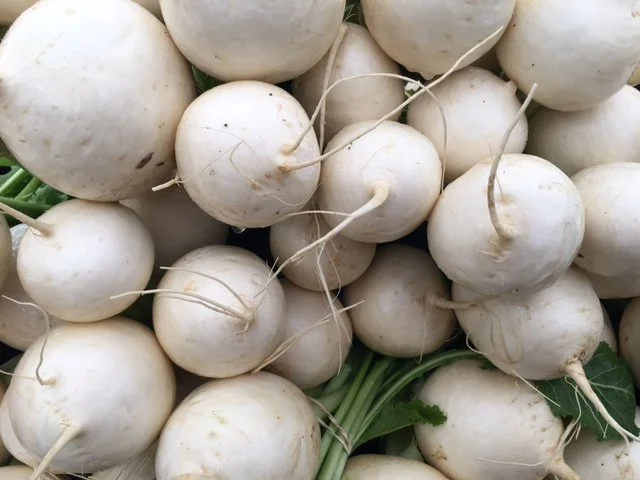Turnip the Heat
Turnip the Heat
Lot’s of bare skin last week as people put on their shorts and t-shirts again with summer-like weather. But there’s a chill on the way that will have us pulling out coats, hats, gloves, and insulated coveralls starting this weekend. Winter is on the way. With cold weather comes the root vegetables, including turnips.
Long a maligned vegetable due to their reputation for being bitter, turnips have been cultivated by humans for over four thousand years. Originally grown for livestock feed during Roman and Hellenistic eras in northern Europe, turnips spread to Asia where they were cultivated as people food.
Today many cultures revere turnips as cultural dietary staple. Both the root portion and the green tops are edible. Turnip greens boiled with fatback known as pot likker, became legendary in the antebellum south. The Scottish serve turnips mashed with potatoes, neeps and tatties, as a side dish to traditional haggis. The Japanese have been eating fermented turnips for over a thousand years.
Turnips are a cool weather root crop that can be planted in the early spring or fall offering two crops per year. They are easy to plant being directly sowed into the ground.
At market you’re likely to encounter two distinct types of turnips. Both are brassicas, related to mustards and radishes. The larger varieties, often purplish in color, are more like radishes with a sharper, earthy flavor, and a starchy consistency. These are better suited for cooking.
The smaller white turnips, also called salad turnips have a creamy texture with a fruity taste. They can be eaten raw, cooked, or pickled.
Turnips are often confused with their cousin, the rutabaga. Rutabagas are also called yellow turnips or Swedish turnips. Although they are similar in appearance, texture, and flavor, they are a different species of brassica.
If you’re looking for health benefits, you’re best off choosing turnips over potatoes. Turnips are higher in vitamin C and boast nearly 14 milligrams of nutrients per cup as opposed to a paltry 4 milligrams in potatoes.
With Thanksgiving only a few weeks away, turnips can lend a bit of pilgrim/Indian authenticity to your holiday. Colonists brought turnips to America in the 1600’s. Native Americans like the new vegetable so much they began growing it for themselves.
It’s not only the vegetable farmers putting turnips in the ground. Livestock farmers are returning to growing them for feedstocks. Grazers are adding turnips to their seed mixes as a way to break up compacted soils and at the same time growing a highly palatable and calorie dense forage.
For centuries, the Celtic cultures warded off evil spirits by carving turnips and filling them with glowing embers, but when they arrived in America in the 1800’s they began using pumpkins. Halloween is over, but I’m willing to try carving a turnip for the holiday table this year. Maybe it will help tame those guests who want to argue about politics or push conspiracy theories. It’s worth a try and if it doesn't work I’m certain one of the pasture residents would be happy to eat it.

